Introduction
Through a variety of online channels, we will spread the word about volunteering remotely to achieve the SDG. This initiative will last into 2030.
Main website: http://onlinevolunteering.net/
Twitter: https://twitter.com/volunteeronline
We will respond to any inquires about how to start volunteering virtually, where to apply, and answer related questions
Objective of the practice
Since the world is growing more connected virtually and there is a great deal more potential on the horizon- there is online education, remote employment, and social networks used internationally; a global partnership such as 'Global Online Volunteers' would support many of the SDG and their target areas. In the earlier days of online volunteering, most non profit organizations simply desired a web presence. Today, much has changed. They can have apps, more user-friendly interactive and engaging designs, games, location-based features, the possibility to reach a much greater audience through marketing strategies, and more. 'Global Online Volunteers' will serve as a clearinghouse for information and support people around the world interested in volunteering virtually.
Key stakeholders and partnerships
Beneficiaries might include individuals living in remote areas seeking to meet others; individuals seeking references and to expand their network; people wishing to make a difference and increase their locus of control
Implementation of the Project/Activity
At this point, the twitter feed is updated regularly with new volunteer opportunities. When someone contacts us through the website, we find a way to help, whether it is promoting their organization, posting their resources on our site, or helping the find volunteer support
Results/Outputs/Impacts
Enabling factors and constraints
The option to volunteer online is a cycle- the individual must have the technical literacy and resources to be involved; with training and education on use of basic technology, their confidence increased, and they are able to help others
Sustainability and replicability
Not only does volunteer benefit the local community, but has individual and social benefits too.
Volunteers feel better mentally and physically. They have an increased locus of control. Individuals with increased locus of control are more likely to use the WWW for health related matters and assess their use as positive. This likely applies in other areas too.
Individuals that volunteer meet others, and might increase their skill set and gain references.
Conclusions
Other sources of information
There is research on the activity of volunteerism and impact on the community, but not as much research on the impact of the virtual volunteer. A goal of this partnership is to collect more success stories and raw data on the involvement and impact of the online volunteer
Goal 1
1.a - Ensure significant mobilization of resources from a variety of sources, including through enhanced development cooperation, in order to provide adequate and predictable means for developing countries, in particular least developed countries, to implement programmes and policies to end poverty in all its dimensions
Goal 3
3.c - Substantially increase health financing and the recruitment, development, training and retention of the health workforce in developing countries, especially in least developed countries and small island developing States
3.d - Strengthen the capacity of all countries, in particular developing countries, for early warning, risk reduction and management of national and global health risks
Goal 5
5.b - Enhance the use of enabling technology, in particular information and communications technology, to promote the empowerment of women
Goal 6
6.b - Support and strengthen the participation of local communities in improving water and sanitation management
Goal 8
8.2 - Achieve higher levels of economic productivity through diversification, technological upgrading and innovation, including through a focus on high-value added and labour-intensive sectors
8.6 - By 2020, substantially reduce the proportion of youth not in employment, education or training
8.9 - By 2030, devise and implement policies to promote sustainable tourism that creates jobs and promotes local culture and products
Goal 9
9.a - Facilitate sustainable and resilient infrastructure development in developing countries through enhanced financial, technological and technical support to African countries, least developed countries, landlocked developing countries and small island developing States
9.b - Support domestic technology development, research and innovation in developing countries, including by ensuring a conducive policy environment for, inter alia, industrial diversification and value addition to commodities
9.c - Significantly increase access to information and communications technology and strive to provide universal and affordable access to the Internet in least developed countries by 2020
Goal 10
10.2 - By 2030, empower and promote the social, economic and political inclusion of all, irrespective of age, sex, disability, race, ethnicity, origin, religion or economic or other status
10.6 - Ensure enhanced representation and voice for developing countries in decision-making in global international economic and financial institutions in order to deliver more effective, credible, accountable and legitimate institutions
Goal 11
11.b - By 2020, substantially increase the number of cities and human settlements adopting and implementing integrated policies and plans towards inclusion, resource efficiency, mitigation and adaptation to climate change, resilience to disasters, and develop and implement, in line with the Sendai Framework for Disaster Risk Reduction 2015-2030, holistic disaster risk management at all levels
11.c - Support least developed countries, including through financial and technical assistance, in building sustainable and resilient buildings utilizing local materials
Goal 12
12.8 - By 2030, ensure that people everywhere have the relevant information and awareness for sustainable development and lifestyles in harmony with nature
12.a - Support developing countries to strengthen their scientific and technological capacity to move towards more sustainable patterns of consumption and production
Goal 13
13.1 - Strengthen resilience and adaptive capacity to climate-related hazards and natural disasters in all countries
13.3 - Improve education, awareness-raising and human and institutional capacity on climate change mitigation, adaptation, impact reduction and early warning
Goal 15
15.c - Enhance global support for efforts to combat poaching and trafficking of protected species, including by increasing the capacity of local communities to pursue sustainable livelihood opportunities
Goal 16
16.3 - Promote the rule of law at the national and international levels and ensure equal access to justice for all
16.10 - Ensure public access to information and protect fundamental freedoms, in accordance with national legislation and international agreements
16.a - Strengthen relevant national institutions, including through international cooperation, for building capacity at all levels, in particular in developing countries, to prevent violence and combat terrorism and crime
16.b - Promote and enforce non-discriminatory laws and policies for sustainable development

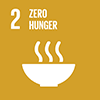

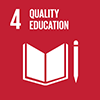

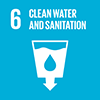
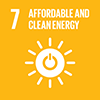
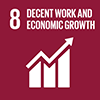
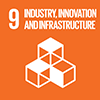

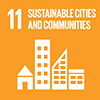
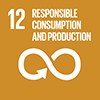
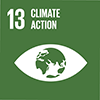
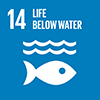
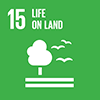
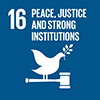
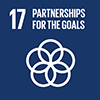
 Start: 01 February, 2019
Start: 01 February, 2019 Completion: 31 December, 2030
Completion: 31 December, 2030